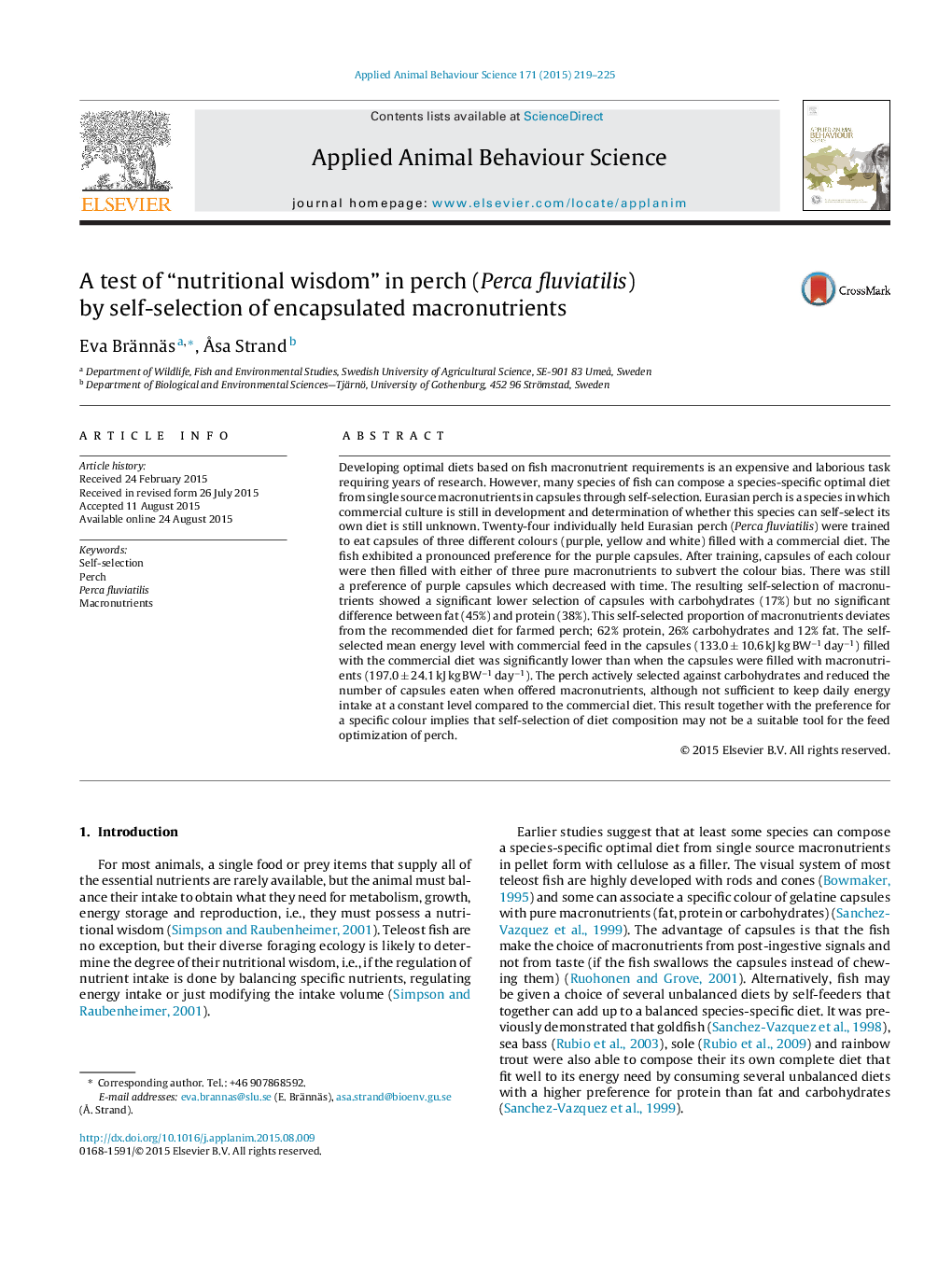| Article ID | Journal | Published Year | Pages | File Type |
|---|---|---|---|---|
| 6379510 | Applied Animal Behaviour Science | 2015 | 7 Pages |
Abstract
Developing optimal diets based on fish macronutrient requirements is an expensive and laborious task requiring years of research. However, many species of fish can compose a species-specific optimal diet from single source macronutrients in capsules through self-selection. Eurasian perch is a species in which commercial culture is still in development and determination of whether this species can self-select its own diet is still unknown. Twenty-four individually held Eurasian perch (Perca fluviatilis) were trained to eat capsules of three different colours (purple, yellow and white) filled with a commercial diet. The fish exhibited a pronounced preference for the purple capsules. After training, capsules of each colour were then filled with either of three pure macronutrients to subvert the colour bias. There was still a preference of purple capsules which decreased with time. The resulting self-selection of macronutrients showed a significant lower selection of capsules with carbohydrates (17%) but no significant difference between fat (45%) and protein (38%). This self-selected proportion of macronutrients deviates from the recommended diet for farmed perch; 62% protein, 26% carbohydrates and 12% fat. The self-selected mean energy level with commercial feed in the capsules (133.0 ± 10.6 kJ kg BWâ1 dayâ1) filled with the commercial diet was significantly lower than when the capsules were filled with macronutrients (197.0 ± 24.1 kJ kg BWâ1 dayâ1). The perch actively selected against carbohydrates and reduced the number of capsules eaten when offered macronutrients, although not sufficient to keep daily energy intake at a constant level compared to the commercial diet. This result together with the preference for a specific colour implies that self-selection of diet composition may not be a suitable tool for the feed optimization of perch.
Related Topics
Life Sciences
Agricultural and Biological Sciences
Animal Science and Zoology
Authors
Eva Brännäs, Ã
sa Strand,
